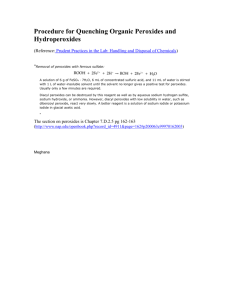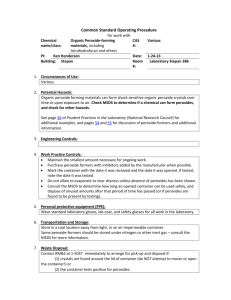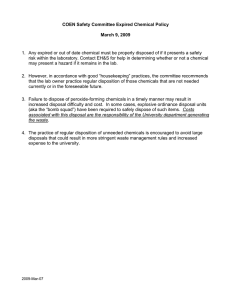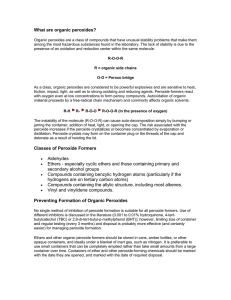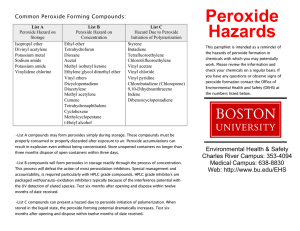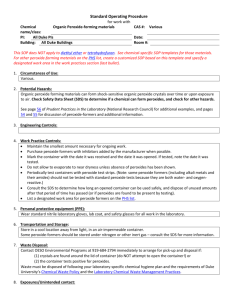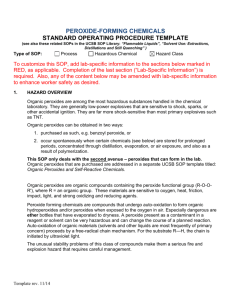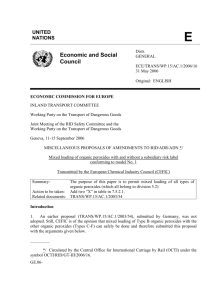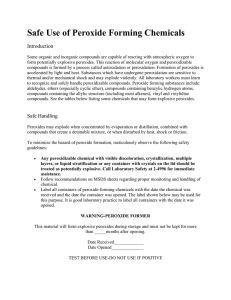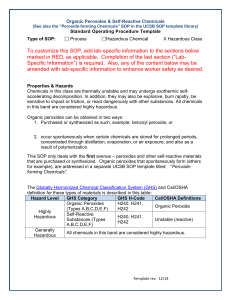Procedures for Detecting and Removing Peroxide Contamination
advertisement
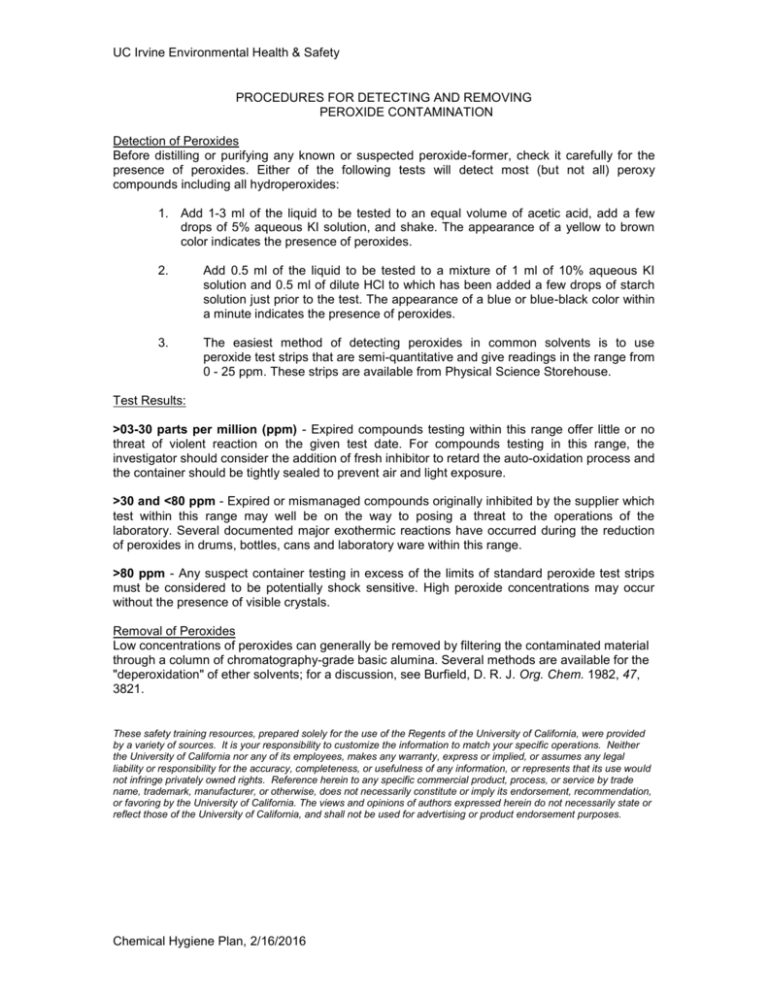
UC Irvine Environmental Health & Safety PROCEDURES FOR DETECTING AND REMOVING PEROXIDE CONTAMINATION Detection of Peroxides Before distilling or purifying any known or suspected peroxide-former, check it carefully for the presence of peroxides. Either of the following tests will detect most (but not all) peroxy compounds including all hydroperoxides: 1. Add 1-3 ml of the liquid to be tested to an equal volume of acetic acid, add a few drops of 5% aqueous KI solution, and shake. The appearance of a yellow to brown color indicates the presence of peroxides. 2. Add 0.5 ml of the liquid to be tested to a mixture of 1 ml of 10% aqueous KI solution and 0.5 ml of dilute HCl to which has been added a few drops of starch solution just prior to the test. The appearance of a blue or blue-black color within a minute indicates the presence of peroxides. 3. The easiest method of detecting peroxides in common solvents is to use peroxide test strips that are semi-quantitative and give readings in the range from 0 - 25 ppm. These strips are available from Physical Science Storehouse. Test Results: >03-30 parts per million (ppm) - Expired compounds testing within this range offer little or no threat of violent reaction on the given test date. For compounds testing in this range, the investigator should consider the addition of fresh inhibitor to retard the auto-oxidation process and the container should be tightly sealed to prevent air and light exposure. >30 and <80 ppm - Expired or mismanaged compounds originally inhibited by the supplier which test within this range may well be on the way to posing a threat to the operations of the laboratory. Several documented major exothermic reactions have occurred during the reduction of peroxides in drums, bottles, cans and laboratory ware within this range. >80 ppm - Any suspect container testing in excess of the limits of standard peroxide test strips must be considered to be potentially shock sensitive. High peroxide concentrations may occur without the presence of visible crystals. Removal of Peroxides Low concentrations of peroxides can generally be removed by filtering the contaminated material through a column of chromatography-grade basic alumina. Several methods are available for the "deperoxidation" of ether solvents; for a discussion, see Burfield, D. R. J. Org. Chem. 1982, 47, 3821. These safety training resources, prepared solely for the use of the Regents of the University of California, were provided by a variety of sources. It is your responsibility to customize the information to match your specific operations. Neither the University of California nor any of its employees, makes any warranty, express or implied, or assumes any legal liability or responsibility for the accuracy, completeness, or usefulness of any information, or represents that its use would not infringe privately owned rights. Reference herein to any specific commercial product, process, or service by trade name, trademark, manufacturer, or otherwise, does not necessarily constitute or imply its endorsement, recommendation, or favoring by the University of California. The views and opinions of authors expressed herein do not necessarily state or reflect those of the University of California, and shall not be used for advertising or product endorsement purposes. Chemical Hygiene Plan, 2/16/2016
